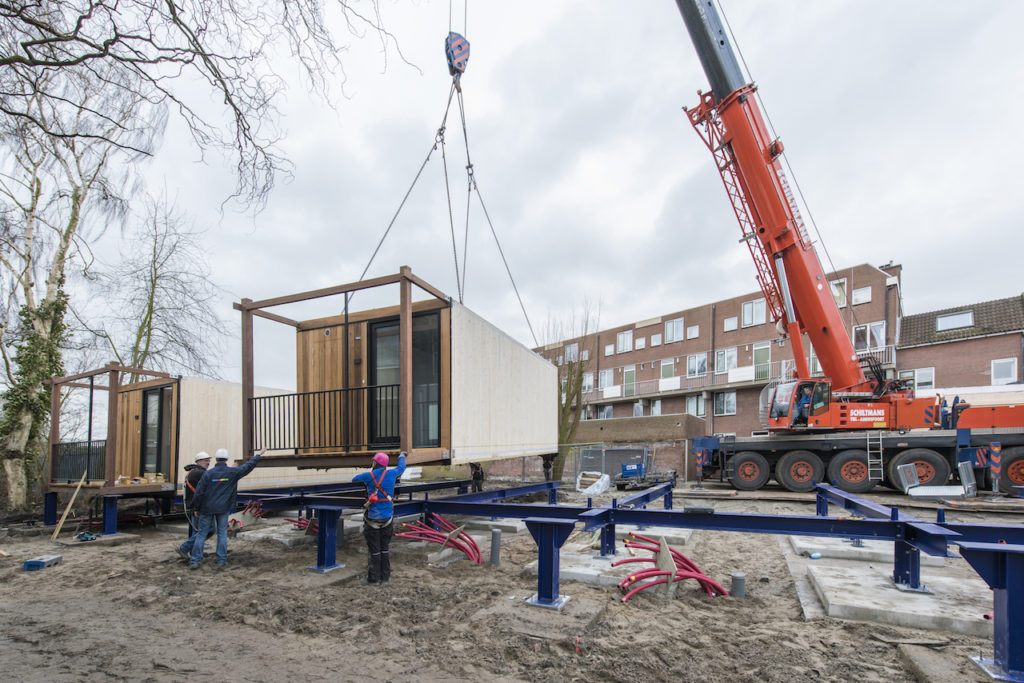
In the period 1900 to the present day, the Dutch population has grown explosively from 5.1 to 17.1 million inhabitants. A large triple in just over a hundred years time. And yet the end of population growth is not in sight. With the current growth expectation, the Netherlands will 2022 more than 17.5 million inhabitants, which will result in even more pressure on the housing market.
Significant shifts have also taken place in the demographic composition of the population. amounted to ' green pressure ' – the ratio between the number of people from 0 to 20 years compared to 20 to 65 years – in 1900 still 89.3%; In 2016, this percentage decreased to 37.9%. At the ' Grey pressure ' – 65 years or older T. O. V from 20 to 65 years – the image is opposed: from 12.1% in 1900 to 30.6% in 2016 (CBS, 2016). In summary: More immigration, less youth and more ageing.
So many people, so many living wishes
In the densely populated areas, the Netherlands has been struggling for years with scarcity on the housing market. There are insufficient rental houses available and the housing stock no longer fits in with the property demand. The consequences: Long waiting lists in the social sector and turmoil in ' regular ' house hunters over crowding by status holders and urgents. Quickly building houses is the motto. Preferably cheap.
In order to build faster housing, the Netherlands with the Crisis and Herstelwet (CHW) can provide a temporary environmental permit up to a maximum of 10 years, with a possible extension of up to 15 years. This law was originally created by the State Government to ensure that construction companies held sufficient work during the crisis, but now also serves as an instrument against the growing housing demand. The Crisis and Herstelwet (CHW) brings forward planned construction projects, for example by shorter procedures, according to the government.
Quality in Temporary
However, there is also a disadvantage to the temporary interpretation of land positions. In practice, temporary projects are regularly built with a limited economic and technical lifespan. This means that temporary buildings are regularly demolished after the first life. Often without paying attention to recycling. Displacement costs are often high because the buildings in the construction are not technically and economically calculated. This leads to unnecessary wastage of raw material, the construction of low-quality buildings and environments and a lack of structural solutions to the housing problem.
The ground subscription
The solution to the quality problem seems simple: build higher quality homes. However, this has the disadvantage that the investment does not outweigh the operating period. The ground subscription offers a solution for this bottleneck.
When a land subscription is closed, an operator can make an appointment with a large landowner – for example the Empire, a municipality, the state forestry or prorail – to be able to operate a certain period (e.g. 20 years) on available Basis of this party. Within the agreed period, the building can be moved several times if necessary. After the expiry of the temporary environmental permit period, the building is moved to a definitive location, or in the case of, for example, a lease financing is returned to the manufacturer.
It is not necessary to agree beforehand which follow-up locations are made available for the building. However, a number of prerequisites are set beforehand to describe a suitable follow-up location. It is also not necessary to guarantee a second location, as this is usually not good for aldermans and land matters. What should be guaranteed (partly) is a residual value after 10 years. This guarantee only needs to be redeemed if no follow-up location can be offered. This in contrast to a possible (guaranteed) subsidy at the front. With the ground subscription the landowner has the certainty that the grounds will not be permanently occupied and a landlord has the opportunity to go through a healthy exploitation with its temporary projects.
Dare to look beyond the period of temporality
Demographic developments are not temporarily absorbed. Also in 10 years the need for dwellings will be undiminished large. Dare to look beyond the period of temporality and choose quality, so that housing problems are not temporary, but structurally resolved. In this way there is profit for the landowner, the operator, the local residents and eventually for the city.
Written by: Ernest Kuiper (Sales manager Finch buildings)
Published by: CorporatieNL (Https://www.corporatienl.nl/artikelen/grondabonnement-kwaliteit-kent-geen-tijdelijkheid/)
Sources:
Central Statistical Office (2016): "Population, households and population development; From 1899 "
Central Statistical Office (2017): "Population in 2016 relatively strongly grown"
State Government: "Crisis and Herstelwet
